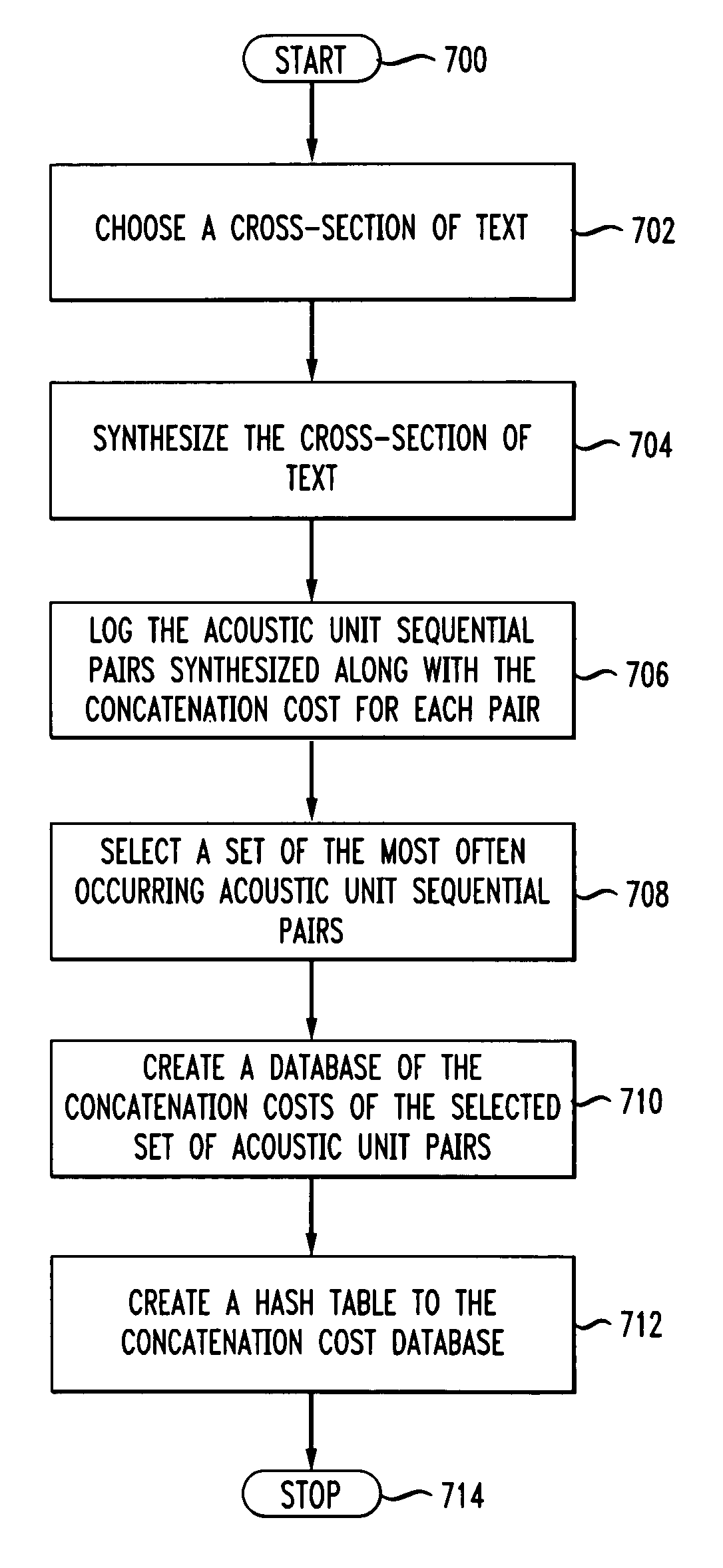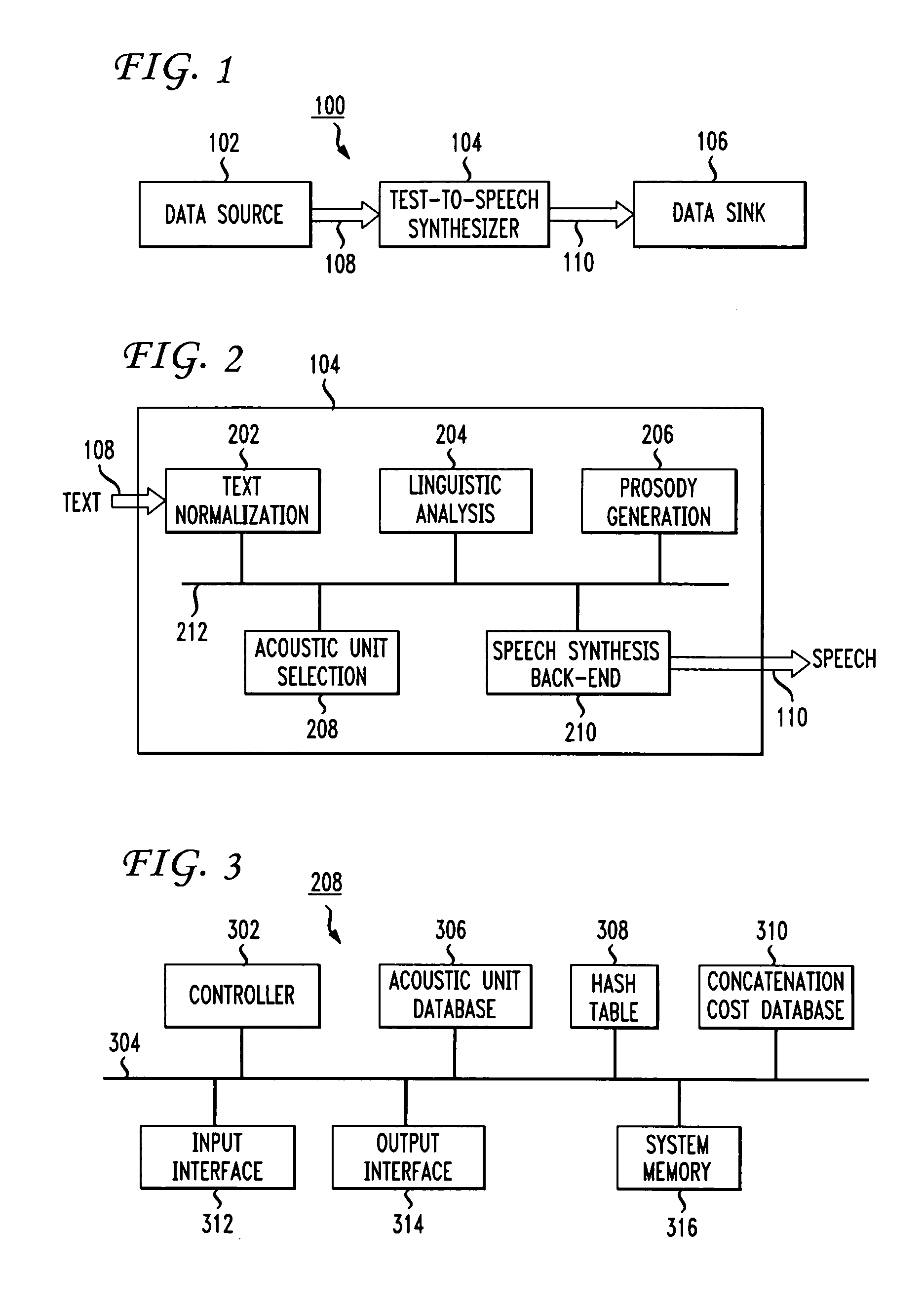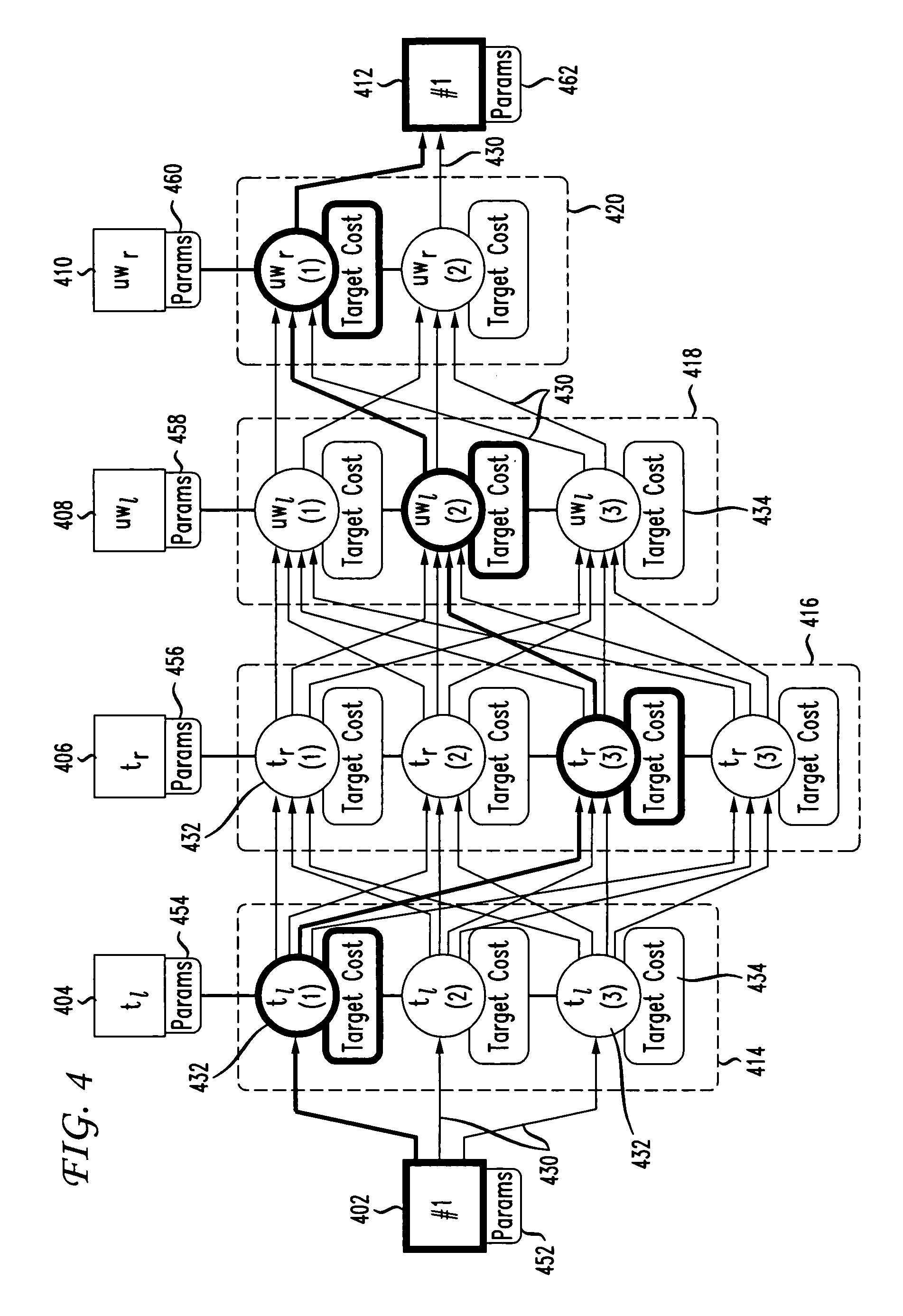Methods and apparatus for rapid acoustic unit selection from a large speech corpus
a speech corpus and rapid technology, applied in the field of methods and apparatus for synthesizing speech, can solve the problems of requiring a great deal of computational resources during operation, and achieve the effect of reducing the number of computational resources
- Summary
- Abstract
- Description
- Claims
- Application Information
AI Technical Summary
Problems solved by technology
Method used
Image
Examples
Embodiment Construction
[0020]FIG. 1 shows an exemplary block diagram of a speech synthesizer system 100. The system 100 includes a text-to-speech synthesizer 104 that is connected to a data source 102 through an input link 108 and to a data sink 106 through an output link 110. The text-to-speech synthesizer 104 can receive text data from the data source 102 and convert the text data either to speech data or physical speech. The text-to-speech synthesizer 104 can convert the text data by first converting the text into a stream of phonemes representing the speech equivalent of the text, then process the phoneme stream to produce an acoustic unit stream representing a clearer and more understandable speech representation, and then convert the acoustic unit stream to speech data or physical speech.
[0021]The data source 102 can provide the text-to-speech synthesizer 104 with data which represents the text to be synthesized into speech via the input link 108. The data representing the text of the speech to be s...
PUM
 Login to View More
Login to View More Abstract
Description
Claims
Application Information
 Login to View More
Login to View More - R&D
- Intellectual Property
- Life Sciences
- Materials
- Tech Scout
- Unparalleled Data Quality
- Higher Quality Content
- 60% Fewer Hallucinations
Browse by: Latest US Patents, China's latest patents, Technical Efficacy Thesaurus, Application Domain, Technology Topic, Popular Technical Reports.
© 2025 PatSnap. All rights reserved.Legal|Privacy policy|Modern Slavery Act Transparency Statement|Sitemap|About US| Contact US: help@patsnap.com



